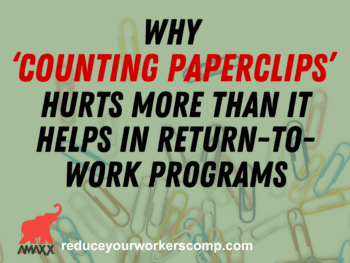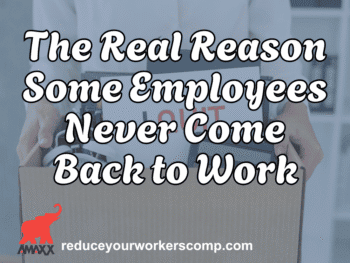
Click Link to Access Free PDF Download
“The 6-Step Process To Determine Workers’ Comp Injury Causation”
Locating a Checklist in An Accessible Location
It is crucial to have a post-injury checklist in an accessible location. This helps supervisors locate the list and ensure each step is taken. By addressing injuries in a prompt manner will help make sure there is a better result.
- Company Intranet – and place it in a conspicuous location. Often, essential documents are buried under multiple dropdowns or other menus. Locate the hyperlink for a post-injury checklist where the average employee can locate it with ease;
- Breakrooms or other gatherings areas; and
- Require the list to be posted in every supervisor and manager’s workspace or office.
Placing a post-injury checklist at conspicuous locations will ensure it will be used consistently and correctly.
Immediate Post Injury Actions
An immediate and proper medical response should be everyone’s first reaction following an injury.
- Non-emergency injuries can be referred to telephonic triage nurse management services. Trained healthcare professionals staffing these services can assist parties in diagnosis the injury and recommend first aid. Consider providing transportation to a medical provider if the employee wishes to be examined by a medical provider after the unfortunate event.
- Emergency and life-threatening issues: All employees should be trained to call 911 for help and on-site security or medical services. When in doubt, do not hesitate to call an ambulance.
Once the employee is stabilized, other steps can take place:
- Provide the employee with the required state documents regarding workers’ compensation benefits. Have the employee sign an attestation form indicating they received this information.
- Complete a company prepared First Report of Injury (FROI). The information on this form should be consistent with and have the same data points as the state FROI. Upon completion, submit the completed FROI to the employer’s workers’ compensation coordinator. Make sure the workers’ compensation insurance carrier also receives this Report.
- Take an employee statement regarding the work injury. This can be as simple as having the employee write how the injury occurred and what pain complaints they are experiencing in their own words. This information should also be submitted to the designated workers’ compensation coordinator.
Post-Injury Investigation Efforts
Additional considerations are vital once the employee has received immediate medical care and a report of the incident has been made.
- Direct the employee to the employer’s preferred healthcare provider and prescription drug pharmacy. Laws concerning the use of these health care facilities vary but are generally permitted so stakeholders can control costs.
- Obtain the names of any witnesses and conduct interviews with these parties. It is also important to preserve any evidence such as machinery or tools involved in the incident. Document other conditions such as a slippery surface before altering it. This evidence may be necessary to future subrogation efforts on the part of the workers’ compensation insurance carrier.
- Obtain reports from any emergency personnel attending the scene of the accident. A list of reports that need to be received includes police reports, medical records generated from EMT/ambulance services, and tow truck operators.
Collecting and preserving the above information will help the claim management team investigate.
Other Considerations
Other considerations need to be a part of any post-injury checklist. Items to consider include:
- Send the injured employee a get well soon card. Empathy in workers’ compensation pays long-term dividends.
- Coordinate return-to-work efforts internally to make sure everyone has the exact expectations.
- Provide the employee with paperwork regarding extended absences. Such paperwork may include information about the Family Medical Leave Act (FMLA).
All communications with an employee following a work injury should be done with respect and dignity.
Conclusions
The prompt reporting of an injury saves time and money in workers’ compensation. Preparing a post-injury checklist and having it readily available ensures the process is complete and consistent. It will also help drive better results and reduce the cost of every workers’ compensation claim.

Contact: mstack@reduceyourworkerscomp.com.
Workers’ Comp Roundup Blog: http://blog.reduceyourworkerscomp.com/
©2022 Amaxx LLC. All rights reserved under International Copyright Law.
Do not use this information without independent verification. All state laws vary. You should consult with your insurance broker, attorney, or qualified professional.

















